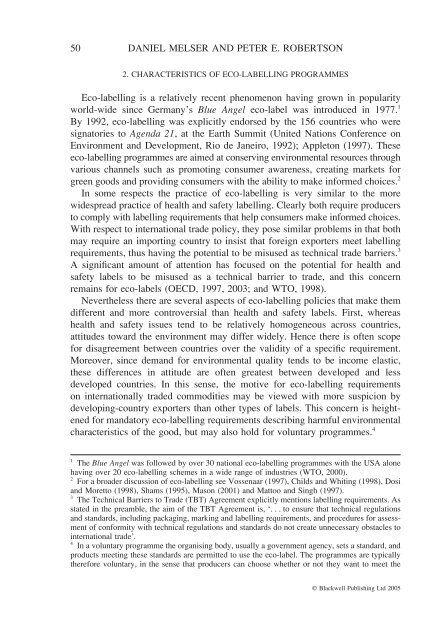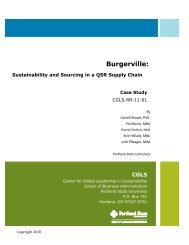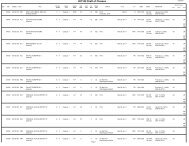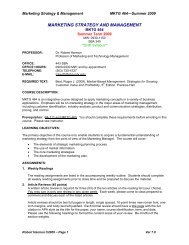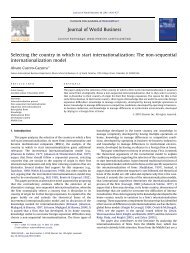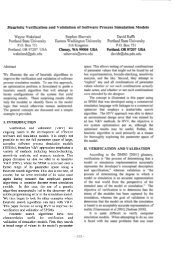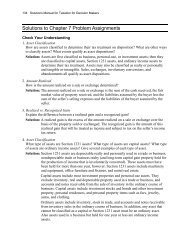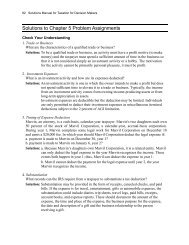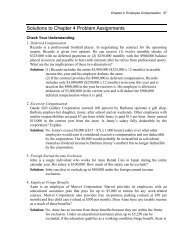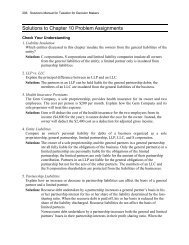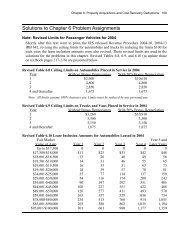Eco-labelling and the Trade-Environment Debate
Eco-labelling and the Trade-Environment Debate
Eco-labelling and the Trade-Environment Debate
Create successful ePaper yourself
Turn your PDF publications into a flip-book with our unique Google optimized e-Paper software.
50 DANIEL MELSER AND PETER E. ROBERTSON<br />
2. CHARACTERISTICS OF ECO-LABELLING PROGRAMMES<br />
<strong>Eco</strong>-<strong>labelling</strong> is a relatively recent phenomenon having grown in popularity<br />
world-wide since Germany’s Blue Angel eco-label was introduced in 1977. 1<br />
By 1992, eco-<strong>labelling</strong> was explicitly endorsed by <strong>the</strong> 156 countries who were<br />
signatories to Agenda 21, at <strong>the</strong> Earth Summit (United Nations Conference on<br />
<strong>Environment</strong> <strong>and</strong> Development, Rio de Janeiro, 1992); Appleton (1997). These<br />
eco-<strong>labelling</strong> programmes are aimed at conserving environmental resources through<br />
various channels such as promoting consumer awareness, creating markets for<br />
green goods <strong>and</strong> providing consumers with <strong>the</strong> ability to make informed choices. 2<br />
In some respects <strong>the</strong> practice of eco-<strong>labelling</strong> is very similar to <strong>the</strong> more<br />
widespread practice of health <strong>and</strong> safety <strong>labelling</strong>. Clearly both require producers<br />
to comply with <strong>labelling</strong> requirements that help consumers make informed choices.<br />
With respect to international trade policy, <strong>the</strong>y pose similar problems in that both<br />
may require an importing country to insist that foreign exporters meet <strong>labelling</strong><br />
requirements, thus having <strong>the</strong> potential to be misused as technical trade barriers. 3<br />
A significant amount of attention has focused on <strong>the</strong> potential for health <strong>and</strong><br />
safety labels to be misused as a technical barrier to trade, <strong>and</strong> this concern<br />
remains for eco-labels (OECD, 1997, 2003; <strong>and</strong> WTO, 1998).<br />
Never<strong>the</strong>less <strong>the</strong>re are several aspects of eco-<strong>labelling</strong> policies that make <strong>the</strong>m<br />
different <strong>and</strong> more controversial than health <strong>and</strong> safety labels. First, whereas<br />
health <strong>and</strong> safety issues tend to be relatively homogeneous across countries,<br />
attitudes toward <strong>the</strong> environment may differ widely. Hence <strong>the</strong>re is often scope<br />
for disagreement between countries over <strong>the</strong> validity of a specific requirement.<br />
Moreover, since dem<strong>and</strong> for environmental quality tends to be income elastic,<br />
<strong>the</strong>se differences in attitude are often greatest between developed <strong>and</strong> less<br />
developed countries. In this sense, <strong>the</strong> motive for eco-<strong>labelling</strong> requirements<br />
on internationally traded commodities may be viewed with more suspicion by<br />
developing-country exporters than o<strong>the</strong>r types of labels. This concern is heightened<br />
for m<strong>and</strong>atory eco-<strong>labelling</strong> requirements describing harmful environmental<br />
characteristics of <strong>the</strong> good, but may also hold for voluntary programmes. 4<br />
1 The Blue Angel was followed by over 30 national eco-<strong>labelling</strong> programmes with <strong>the</strong> USA alone<br />
having over 20 eco-<strong>labelling</strong> schemes in a wide range of industries (WTO, 2000).<br />
2 For a broader discussion of eco-<strong>labelling</strong> see Vossenaar (1997), Childs <strong>and</strong> Whiting (1998), Dosi<br />
<strong>and</strong> Moretto (1998), Shams (1995), Mason (2001) <strong>and</strong> Mattoo <strong>and</strong> Singh (1997).<br />
3 The Technical Barriers to <strong>Trade</strong> (TBT) Agreement explicitly mentions <strong>labelling</strong> requirements. As<br />
stated in <strong>the</strong> preamble, <strong>the</strong> aim of <strong>the</strong> TBT Agreement is, ‘. . . to ensure that technical regulations<br />
<strong>and</strong> st<strong>and</strong>ards, including packaging, marking <strong>and</strong> <strong>labelling</strong> requirements, <strong>and</strong> procedures for assessment<br />
of conformity with technical regulations <strong>and</strong> st<strong>and</strong>ards do not create unnecessary obstacles to<br />
international trade’.<br />
4 In a voluntary programme <strong>the</strong> organising body, usually a government agency, sets a st<strong>and</strong>ard, <strong>and</strong><br />
products meeting <strong>the</strong>se st<strong>and</strong>ards are permitted to use <strong>the</strong> eco-label. The programmes are typically<br />
<strong>the</strong>refore voluntary, in <strong>the</strong> sense that producers can choose whe<strong>the</strong>r or not <strong>the</strong>y want to meet <strong>the</strong><br />
© Blackwell Publishing Ltd 2005


